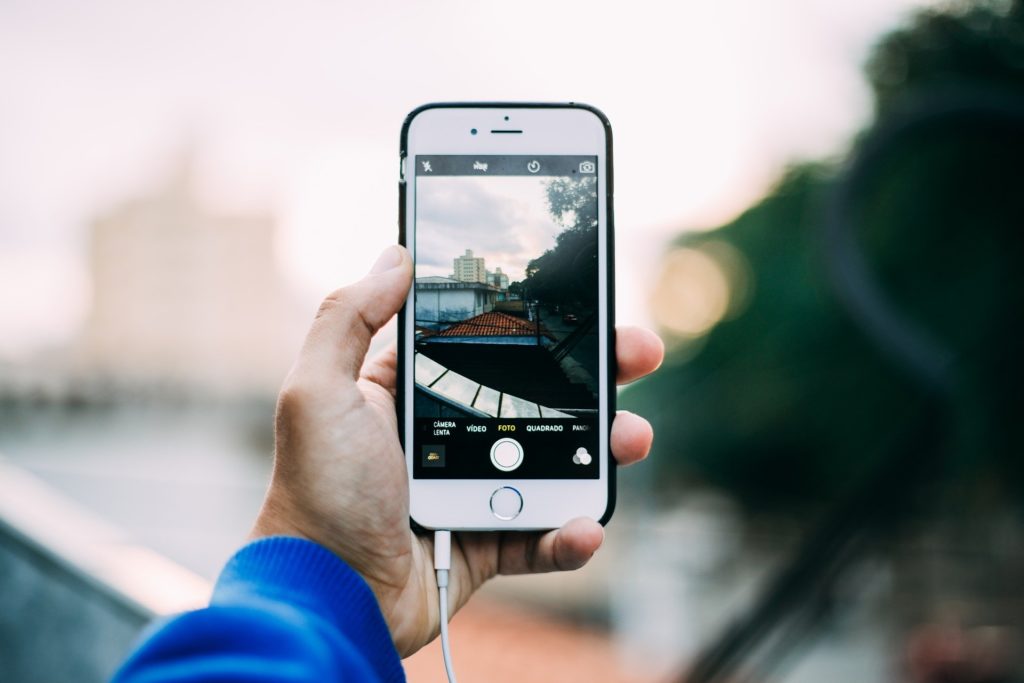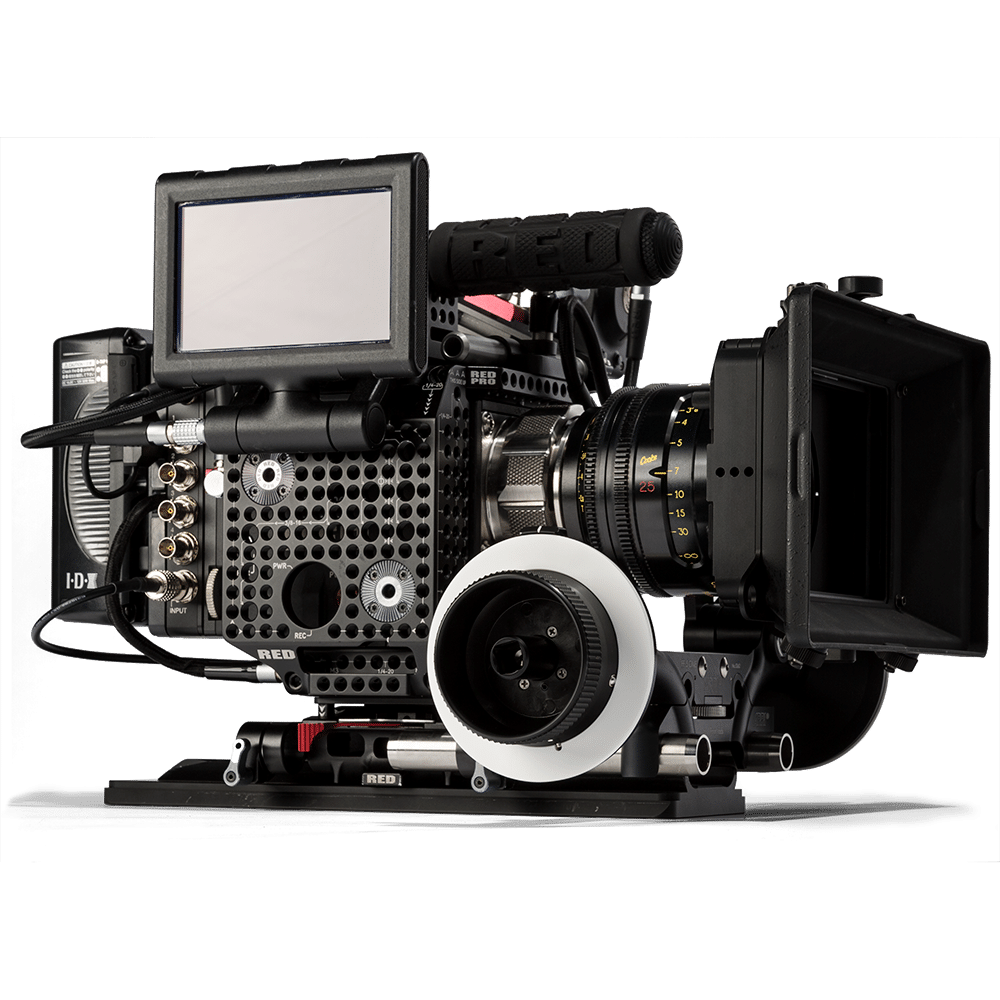5 min read
Ready to start making videos for your business?
Excellent news! With 85% of internet users in the U.S. watching videos online, it’s probably time to boost your brand presence in this important medium, if you haven’t already.
First things first, though—we’ll need to decide on the best camera for your business video shoot.
While there may not be one perfect camera for all situations, understanding the goals and ideal end result for your video can help us determine the type of camera best suited to your needs. Is turnaround time of the essence for quick posting (or even live streaming) on social media?
We like to understand the venue where the production will take place too. Many surrounding elements can impact our recommendations for equipment.
For example, if you are shooting in weak light that may require more precise lens options.
Are there lines from actors that will need to be recorded? That will determine the size of the crew and audio equipment needed.
What’s your budget for video production?
These are all variables that will help inform our decision.
Remember, don’t get hung up on the most advanced (and expensive) technology. There are several options we can to capture quality video for your business. Let’s start by examining the two opposite ends of the spectrum.
Red Camera or Smartphone: Is Either Right For Your Corporate Video Production?
Red Cameras
At the apex of professional-grade cameras sits the Red Camera. It’s a staple in Hollywood (along with other high-end options from ARRI) meant for cinema-style shooting. It uses traditional film lenses and other film hardware including matte boxes and follow focus systems—yet it’s completely digital. Red Cameras come with serious gravitas. And not surprisingly, they also come with a huge price tag.
Sure, we can make your video look like The Joker…
But for most small business owners (and even large companies for that matter), using a five-figure video camera for a corporate video is not only incredibly impractical, but totally unnecessary. With recording formats that allow for a ton of work to be done in the editing room, it’s no surprise that big budget films lean heavily on Red Cameras. But, odds are the budget for your corporate video is slightly less than the $60 million it cost to make The Joker.
Don’t get us wrong, the jaw-dropping capabilities of these cameras are pretty awesome.
And as a top video production and marketing agency, we want every corporate video we produce to be the Citizen Kane of corporate videos—but using a video camera of this caliber for a 90-second clip that ends up on your Facebook page might be overkill.

Smartphone Cameras
Compact, always at the ready, and easy to use, the video quality on smartphone cameras has come a long way.
Smartphone cameras are lightweight, portable, can shoot landscape or vertical, and most offer some special effect options like time-lapse and slow motion. Smartphone cameras even shoot in HD (many also have 4K options!).
Just remember that not all 4K/1080 HD footage looks the same. The sensors on a smartphone are smaller than more advanced cameras, so even though the footage is HD and 4K in image size, the quality will be lesser when shot on a phone.
Storage space can also be a concern when shooting a lot of video on a phone. Here’s what you can expect, based on video settings…
Standard video recording:
- 720p HD at 30fps: 40MB per minute
- 1080p HD at 30fps (default resolution): 60MB per minute
- 1080p HD at 60fps (smoother video): 90MB per minute
- 4K at 24fps: 135MB per minute
- 4K at 30fps: 170MB per minute
- 4K at 60fps: 400MB per minute
Slo-mo video recording:
- 1080p HD at 120fps: 170MB per minute
- 1080p HD at 240fps (most frames, default): 480MB per minute
Bottom line: to get started on the production of your business videos, often the best thing to do is just that…get started. And the easiest, most cost-effective way to do it is with a smartphone.
Camera Options for your Business Video
Now, let’s take a quick look at all the options for making the perfect business video.

Smartphone cameras
As mentioned, convenience and ease-of-use outweighs quality, but as we’ve established, smartphone cameras can hold their own these days. A suitable option for efficient video capture.

Compact Cameras
Also known as point-and-shoot cameras, they’re a slight professional step up from a smartphone camera. Most compact cameras are easy to operate with focus-free lenses and auto settings for exposure and other key features.
Bridge Cameras
The intermediary between point-and-shoot and more high-end cameras, bridge cameras include one fixed but versatile lens with auto and manual options.


Mirrorless Cameras
Light, compact, fast, and great for video, but limitations include less than ideal in-camera audio options, fewer lenses and accessories than DSLR and professional cameras
DSLR Cameras
A Digital Single Lens Reflex (DSLR) camera is essentially a digital photo camera fitted with the ability to take high quality HD videos. These cameras come with extensive lens selection and optimal viewfinders.


Cinema-Style Cameras
High-end options from Red, ARRI, Sony and Canon dominate this market. They come with more bells, whistles, and far superior video and audio quality. They’re very expensive, best suited for professional videographers and those who need that “motion picture” look and feel to their videos.
Share Your Story Through Video
Always remember that the quality of your video will be rendered meaningless if no one sees it. So in many cases, businesses find their sweet spot in erring on the economical side with video production costs—thus ensuring there’s more than enough budget left to optimally market and distribute the video.
If you have questions or would like to see how Twelve Legs Marketing can help you produce videos for your business, contact our award-winning video production team any time for a free 30-minute consultation!





